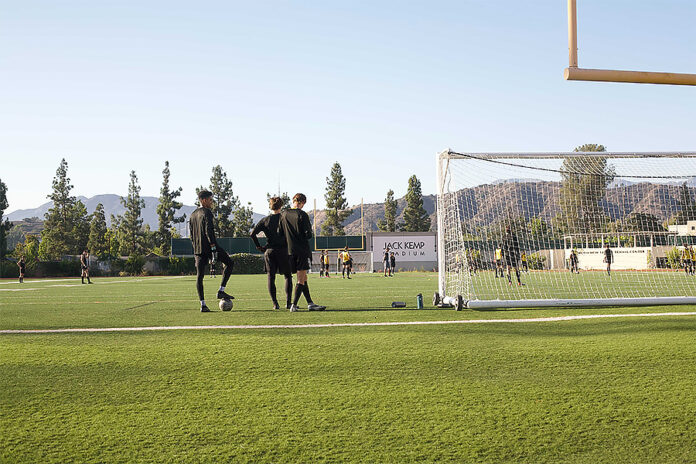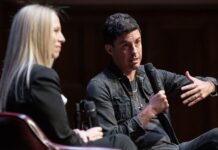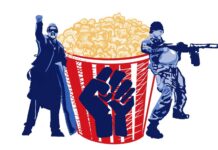
Mohi Andrabi ‘21 and Ben Tucker (senior) are using artificial intelligence software to run predictive analytics on the Occidental men’s soccer team. The project, titled Pass, generates evaluations of shot quality that illustrate how the team is performing, how it should be performing and how it can be expected to perform in the future.
According to Andrabi, the project began as his senior comprehensive project for computer science. He said he wanted to understand why the men’s soccer team had underperformed during his junior year.
“I decided that I would explore a machine learning method to properly understand why the team was [performing poorly],” Andrabi said.
According to Tucker, he and Andrabi eventually plan to transform the project into a start-up business called Pass, with the goal of helping college coaches better understand their teams through data analysis. Andrabi, who studied computer science at Occidental, deals with the analytics software, while Tucker, who is majoring in economics and plays for the Occidental soccer team, handles marketing and scouts potential clients in the sports analytics industry.
“Our basic idea was to make data analysis more accessible for coaches to use during the game,” Tucker said. “We think that this gives coaches an extra tool to help them push above and beyond their competition.”
Tucker said that as of now, he and Andrabi are limited to post-game reports due to a lack of the necessary technology to record data, break it down and share the analysis during a match. The data is still manually collected and inserted into the software, Andrabi said. However, according to Tucker, their eventual goal is to be able to generate analytical breakdowns during a game and create a system that allows coaches to access them immediately on a phone or tablet.
According to Andrabi, the AI software he created primarily focuses on expected goals — the individual probability that a specific shot will result in a goal. When the user feeds the software shot metrics from a game, it assesses shot quality to show how a team performed compared to how it should have performed, both offensively and defensively.
“Our current model takes in a series of short criteria [and] produces a prediction. So they would say, shoot from 18 yards out on the right wing, right foot, and that will spit out a [goal probability] of 0.25 — very low because it’s a low quality shot. And you can compare that expected outcome to actual outcome to see how the team is actually doing,” Andrabi said.
Andrabi said this method mitigates guesswork by providing tangible numbers for evaluation.
“A lot of times you’ll watch a sports match and people will be like, ‘The best team didn’t win,’” Andrabi said. “But when you say that, you don’t really have any quantitative backing to that statement. So this method allows you to actually see which team was ‘supposed to win.’”
To program this machine learning system, Andrabi said he used a large set of training data — shot metrics from professional soccer leagues spanning a period of five years. From there, the AI software learned which shots are more effective than others and can now extrapolate a probability to score for every shot taken. The data from Occidental men’s soccer game film and from live games make up the test set of data. According to Andrabi, by using these metrics to see how the team has performed, a coach can break down what he needs to work on.
“You can, to a certain degree of confidence, identify exactly what is going well and what is going wrong with a player, and the team as a whole,” Andrabi said.
According to Rod Lafaurie, head coach of the Occidental men’s soccer team, predictive analytics and data analysis are invaluable for soccer in particular.
“It’s vital in helping you gauge player and team performance,” Lafaurie said. “The eyeball test is one thing, but actually tracking information that you wouldn’t catch with the naked eye makes the difference between winning and losing most of the time.”
According to Tucker, he and Andrabi are looking to expand their technological capacity to make this data analysis more efficient. Ultimately, they would like to incorporate more expensive AI tracking cameras that can track the ball, register player numbers and track where shots are taken.
“The idea is down the road, AI could completely track all stats and you wouldn’t even need somebody on the sideline tracking data,” Tucker said.
With those technological advances, Tucker said they eventually hope to market their products to a wide range of colleges.
“We realized that specifically within the college sports space, there’s not a whole lot by way of analytics,” Tucker said. “We’re looking at other SCIAC schools right now. The idea is to expand to all Division III schools.”
According to Tucker, their initial strategy is limited to soccer, which they are most familiar with. However, their long-term plan includes expanding their analytics into other sports and marketing a package deal to interested colleges.
“Part of AI is its ability to learn — there’s actually not that many changes that we would need to make to track statistics for water polo, volleyball or even basketball,” Tucker said. “Down the road we would go to a school’s athletic department, say we do statistical analysis for the following sports, and offer a package deal. That’s our longer-term strategy.”
Lafaurie said that with more funds, he would allocate much of it to similar technology.
“With an unlimited budget, I would put most of my money toward learning more about my team through analytics, data [and] video breakdown technology,” Lafaurie said.
According to Tucker, they are moving into the industry of analytics in sports at the right time. The industry is expected to balloon in revenue size to 10.64 billion dollars by 2028, up from 2.2 billion in 2020.
“Teams are realizing the value that data provides,” Tucker said. “The industry is growing and I think it will only get hotter.”
![]()


































